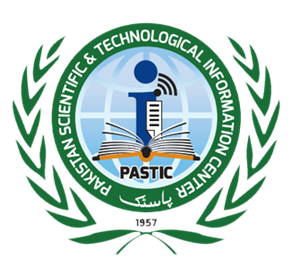Multidimensional Impact of Regular Physical Activity on Adolescent Mental Health, Integrating Neurobiological and Psychosocial Mechanisms
Exercise Reduces Depression and Anxiety in Youth
DOI:
https://doi.org/10.69750/dmls.01.07.060Keywords:
Physical activity, adolescent mental health, depression, anxiety, neuroplasticity, neurotransmitters, exercise intervention, cognitive performance, psychosocial mechanismsAbstract
Background: Frequent exercise promotes social connection, increases neuroplasticity, and regulates neurotransmitters to enhance teenage mental health by lowering anxiety, improving depression, and improving cognitive performance.
Objectives: The purpose of this study was to assess the impact of exercise on mental health status among youths aged 12–18 in terms of depression, anxiety, and self-esteem.
Methodology: This study employed a cross-sectional survey design whereby 300 adolescents were selected and divided into control group and the special intervention group. The structured physical activities were 3 times per week for 12 months for the subjects in the intervention group. Physical Activity, Mental Health, Neurobiological and Psychosocial Parameters were measured regularly and collected raw data were represented through SPSS version 26.0 by applying t-tests analyses. p≤0.05 was considered statistically significant.
Results: Depression scores were significantly reduced among adolescents in the intervention group which stood at 8.4 points less than those in the control group (p<0. 01). Also, self esteem increased by 12 percent in the intervention group while only 3% for the control group, p= 0.02 The existence of a positive connection between PA and better mental health was consistent even when statistical control was made for covariates.
Conclusion: Physical exercise is proven to have a positive effect and to decrease the level of depression and anxiety in adolescents and to increase self-esteem. These results therefore support the recommendation of physical activity in mental health care approaches for this age bracket.
Downloads
References
Biddle SJH, Ciaccioni S, Thomas G, Vergeer I. Physical activity and mental health in children and adolescents: Updated review and analysis of causality. Psychol Sport Exerc. 2019;42:146–55. doi:10.1016/j.psychsport.2018.08.011
Wassenaar TM, Wheatley CM, Beale N, Nichols T, Salvan P, Meaney A, et al. Vigorous physical activity intervention and mental health: Fit to Study trial. Int J Behav Nutr Phys Act. 2021;18(1):47. doi:10.1186/s12966-021-01113-y
Camero M, Hobbs C, Stringer M, Branscum P, Taylor EL. Review of physical activity interventions on determinants of mental health. Int J Ment Health Promot. 2012;14(4):196–206. doi:10.1080/14623730.2012.752901
Moeini B, Rezapur-Shahkolai F, Bashirian S, Doosti-Irani A, Afshari M, Geravandi A. Physical activity interventions for weight management: Systematic review. Syst Rev. 2021;10(1):52. doi:10.1186/s13643-021-01602-y
Li Z, Li J, Kong J, Li Z, Wang R, Jiang F. Adolescent mental health interventions: Physical activity and strategies. Front Psychol. 2024;15:1433698. doi:10.3389/fpsyg.2024.1433698
Molcho M, Gavin A, Goodwin D. Physical activity and mental health in Irish adolescents. Int J Environ Res Public Health. 2021;18(4):1713. doi:10.3390/ijerph18041713
Boelens M, Smit MS, Raat H, Bramer WM, Jansen W. Organized activities and mental health: Umbrella review. Prev Med Rep. 2022;25:101687. doi:10.1016/j.pmedr.2021.101687
Ganjeh P, Meyer T, Hagmayer Y, Kuhnert R, Ravens-Sieberer U, von Steinbuechel N, et al. Physical activity and mental health in ADHD and non-ADHD children. Int J Environ Res Public Health. 2021;18(5):2207. doi:10.3390/ijerph18052207
Yang W, Liang X, Sit CH. Physical activity and mental health in children with intellectual disabilities: RE-AIM meta-analysis. Int J Behav Nutr Phys Act. 2022;19(1):80. doi:10.1186/s12966-022-01312-1
Stabelini Neto A, Santos GC, Silva JM, Correa RC, da Mata LBF, Barbosa RO, et al. ActTeens physical activity protocol. PLoS One. 2022;17(8):e0272629. doi:10.1371/journal.pone.0272629
Martín-Rodríguez A, Gostian-Ropotin LA, Beltrán-Velasco AI, Belando-Pedreño N, Simón JA, López-Mora C, et al. Sporting mind: Physical activity and psychological health. Sports (Basel). 2024;12(1):37. doi:10.3390/sports12010037
Vinall J, Pavlova M, Asmundson GJG, Rasic N, Noel M. Mental health comorbidities in pediatric chronic pain. Children (Basel). 2016;3(4):40. doi:10.3390/children3040040
Philippot A, Dubois V, Lambrechts K, Grogna D, Robert A, Jonckheer U, et al. Physical exercise on depression/anxiety in adolescents: RCT. J Affect Disord. 2022;301:145–53. doi:10.1016/j.jad.2022.01.011
Faria FR, Miranda V, Howe CA, Sasaki JE, Amorim PR. Physical activity, sedentary classes, and mental outcomes. PLoS One. 2020;15(6):e0234374. doi:10.1371/journal.pone.0234374
Gubbels JS, Kremers SP, Droomers M, Hoefnagels C, Stronks K, Hosman C, et al. Green spaces, physical activity & mental health. Health Place. 2016;40:153–60. doi:10.1016/j.healthplace.2016.06.002
Borland RL, Cameron LA, Tonge BJ, Gray KM. Physical activity and mental/behavioral outcomes in intellectual disability: Review. J Appl Res Intellect Disabil. 2022;35(2):399–420. doi:10.1111/jar.12961
Gu X, Zhang T, Chu TL, Keller MJ, Zhang X. Motor competence and mental health via physical fitness. J Sports Sci. 2019;37(17):1927–33. doi:10.1080/02640414.2019.1605652
Heinze K, Cumming J, Dosanjh A, Palin S, Poulton S, Bagshaw AP, et al. Neurobiological effects of long-term physical activity on mental health. Neurosci Biobehav Rev. 2021;120:431–41. doi:10.1016/j.neubiorev.2020.10.014
Ziminski D, Szlyk HS, Baiden P, Okine L, Onyeaka HK, Muoghalu C, et al. Concussion and mental health in adolescents. Psychiatry Res. 2022;312:114542. doi:10.1016/j.psychres.2022.114542
Ganjeh P, Hagmayer Y, Meyer T, Kuhnert R, Ravens-Sieberer U, von Steinbuechel N, et al. Physical activity & long-term mental health outcomes: Cross-lagged analysis. Front Behav Neurosci. 2022;16:933139. doi:10.3389/fnbeh.2022.933139
Duncan MJ, Riazi NA, Faulkner G, Gilchrist JD, Leatherdale ST, Patte KA. Physical activity, sleep, screen time & mental health during COVID-19. Ment Health Phys Act. 2022;23:100473. doi:10.1016/j.mhpa.2022.100473
Shahid R, Akram M, Ayub M, Nadeem M, Fatima E, Haroon AM, et al. Psychiatric symptoms among medical students in Punjab. Dev Med Life Sci. 2024;1(3):13–9. doi:10.69750/dmls.01.03.029
Hrafnkelsdottir SM, Brychta RJ, Rognvaldsdottir V, Gestsdottir S, Chen KY, Johannsson E, et al. Screen time, vigorous PA & mental health in adolescents. PLoS One. 2018;13(4):e0196286. doi:10.1371/journal.pone.0196286
Borde R, Smith JJ, Sutherland R, Nathan N, Lubans DR. School-based interventions to increase physical activity. Obes Rev. 2017;18(4):476–90. doi:10.1111/obr.12517
Dimitri P, Joshi K, Jones N. Physical activity benefits for long-term conditions in youth. Arch Dis Child. 2020;105(11):1035–40. doi:10.1136/archdischild-2019-318017
Wang K, Li Y, Liu H, Zhang T, Luo J. Can physical activity offset sedentary harms? Front Public Health. 2024;12:1412389. doi:10.3389/fpubh.2024.1412389
Shi C, Yan J, Wang L, Shen H. Physical fitness, self-rated health & mental disorders in adolescents. Front Psychol. 2022;13:1003231. doi:10.3389/fpsyg.2022.1003231






















